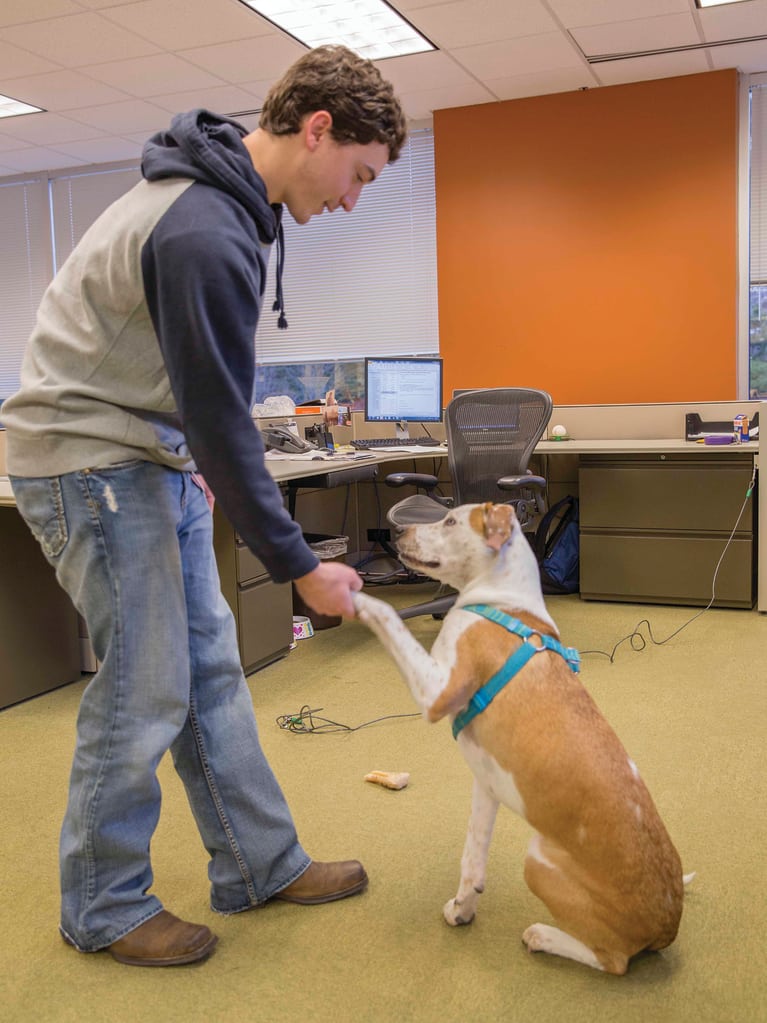Employers have until Jan. 22, 2017, to get up to speed on using the newest version of the Form I-9, marked 11/14/2016. The version that has been in effect since 2013 (marked 03/08/13) will become obsolete on that date. The new form can be accessed on the U.S. Citizenship and Immigration Services (USCIS) website. The expiration date on the new form is 08/31/2019.
Failure to use the new form beginning Jan. 22 will expose organizations to penalties, which were recently nearly doubled.
“With a new administration coming in we have a lot of indications that ICE [Immigration and Customs Enforcement] audits will increase, new investigation officers will be hired and enforcement in this area will get a lot of focus,” said Cynthia Lange, managing partner of immigration law firm Fragomen’s Northern California practice in San Francisco.
“Employers will find that the Form I-9 in many ways is very similar to the previous version, but some individual fields and the form instructions have been revised,” said Katie Nokes Minervino, an immigration attorney in the Portland, Maine, office of law firm Pierce Atwood. “The core requirements of the form have not changed,” she added. The acceptable documents list and retention requirements have remained the same.
Employers are not required to use the new I-9 on existing employees—one of the most common queries after a new version of the form is released, said Dave Basham, a senior analyst in the verification division at USCIS.
[SHRM members-only toolkit: Complying with I-9 and E-Verify Requirements]
There are now three ways for users to complete the Form I-9:
- Print it and fill it out manually, pen to paper.
- Fill it out electronically, then print and sign it. Take note that using the online “smart” version of the form does not qualify as a compliant electronic I-9. If the online fillable version is used, it must be printed and signed pen to paper.
- Use an electronic I-9 vendor.
Employers using electronic I-9 systems should not experience any direct impact with this form change, Lange said. Electronic systems should simply update the form.
If relying on a vendor, employers should compare the electronic product and the fields and requirements of the new I-9 version to ensure the vendor is collecting all the necessary information, added Pierce Atwood immigration attorney Tony Derosby, also in the Portland office.
Using the ‘Smart Form’
The newest version of the I-9 has been dubbed a “smart I-9” because of the fillable, interactive PDF option that enables users to fill in the fields of the form online before printing and signing a hard copy. “When a user opens the smart I-9 in Adobe Reader, the fillable PDF form limits options for further responses based on information previously provided, flags errors and fields where information is missing, provides a link to the form instructions, and includes additional instructions for specific fields that are available by hovering over a question-mark icon that appears above a field within the PDF,” Minervino said.
“The form substitutes for training and helps guide people to not make the same mistake over and over again,” Lange said. But she reminded employers that the smart form is not a safe harbor against ICE enforcement, is not integrated with E-Verify nor other HR systems, and cannot store information nor enable reporting.
“This is still really a ‘paper’ I-9,” she said.
There’s also no requirement that employers use the smart form at all. Or, the smart form can be partially filled out online before being printed, finished and signed.
Derosby explained that an employee could, for example, fill in Section 1 online, print it out and sign page 1 before handing it to his or her employer. The employer could then fill in Section 2 and sign the document, making sure to keep the two pages together for retention. Or, a new hire could fill in Section 1 by hand, and the employer could complete Section 2 online, print and sign.
He said that while the smart I-9 option is “probably not worth going out of your way to have an employee use,” especially if it will complicate getting it back on time, there’s enough benefit to it that employers shouldn’t write it off completely.
“The new fillable I-9 is a good fit if your onboarding process involves the new hire sitting down at a company computer to complete the I-9 on the first date of hire and you can ensure that the employee has access to the current version of Adobe Reader, the internet and a printer,” Derosby said.
Read the New Instructions Carefully
Users will notice three tabs on top of the online I-9—Instructions, Start Over and Print—after clicking on the link for the form on the USCIS site.
“If someone makes mistakes while entering information onto the form and wants to start over, they can hit the Start Over tab,” Basham said. If the HR professional decides to print out the form to be completed, he or she will need to click on the Instructions tab and print those out as well to give to the worker filling it out.
The instructions were more than doubled from six pages to 15 to provide more guidance for users. “The instructions are dense but actually provide a lot of good information to train your HR team,” said Montserrat Miller, a partner in the Washington, D.C., office of Arnall Golden Gregory.
Changes to Section 1
Patrick Shen, a partner in Fragomen’s Washington, D.C., office, said only the employee can fill out the information in Section 1.
One key change is that users must enter N/A in any fields that they previously would have left blank. For example, if there is nothing to enter in the fields asking for a middle initial, or apartment number or Social Security number, those fields can no longer be left blank.
The main benefit of using the smart version of the form is that once the employee and employer are finished entering information and click out of the form, all entries are reviewed for the correct format, including entries in blocks that require an N/A. If errors are found, the form will signal what needs to be fixed.
Another modification lessens the administrative burden on foreign workers. If the new hire attests to being a foreign national authorized to work in the U.S., he or she can provide either an alien registration number, Form I-94 admission number or foreign passport number. Previously, foreign nationals authorized to work were required to provide both an I-94 number and foreign passport information.
The new form allows for up to five preparers and/or translators to each sign and date the form in his or her own field. The prior form had one field for potentially multiple preparers and translators to fit their signatures in.
“The employee [now] needs to affirmatively check a box indicating that he or she did not use a preparer or translator if that’s in fact the case,” Minervino said. “This is an important double check for all employers to ensure that this box is completed by the new hire.”
Changes to Section 2
Employers are responsible for completing Section 2 of the Form I-9. Lange said the employer representative verifying employment eligibility must be in the physical presence of the person being verified and must also see the original documents being presented.
Although the smart I-9 was an attempt to leverage technology to assist employees and employers in the I-9 process, USCIS stated that using FaceTime or Skype with a new hire to review documents is not permissible under the regulations, Derosby said.
“Employers are still confused about this,” Lange added. “Using a webcam or some remote technology is still not acceptable.”
Basham said that if an employee is using the online version of the form, Section 2 will self-populate the worker’s full name on page 2. A new field asks for the new hire’s citizenship or immigration status. Employers must enter the corresponding numeral (1, 2, 3, 4) from the employee attestation on page 1.
There are no changes to the document list columns, but dropdown menus common to electronic I-9s are now available on the online form.
“Use the dropdown to select which document(s) was presented,” Basham said. “We don’t require HR professionals to be document experts. But HR must accept documents presented by an employee if they reasonably appear to be genuine and relate to the individual.”
Shen said that the smart form is “pretty smart, but it’s not perfect. Using it is not a safe harbor.” He added that it’s important for HR to continue to be familiar with immigration-related anti-discrimination laws to stay compliant. If an employer asks too many questions of foreign workers about documents or doesn’t accept a valid document, then it could be exposed to liability. “Note that not all acceptable documents are included in the dropdown menus,” he said. Even though the scenario is not common, an employer may receive an acceptable document that is not listed and can be open to a discrimination charge if it is rejected.
Finally, USCIS has added a large box for additional information in section 2. This could be used to notate information that used to have to be scribbled in the margins of the form, such as a foreign national’s Temporary Protected Status or Optional Practical Training information. “You can use it to include an E-Verify case number, employee termination date, form retention dates, and any other comments for the employer’s business process,” Miller said. “But make sure whatever comments you write are limited to the Form I-9 or your participation in E-Verify. If your form is the subject of a government investigation, whatever you write on the form is fair game.”
No Changes to Section 3
Section 3 regarding reverification has not changed, but any reverifications done after Jan. 22 must be done using the revised form. Reverification must be done when a worker’s employment authorization or employment authorization documentation expires. “Employers must remember that workers can show any document that shows right to work and don’t have to use the same documents they presented when verified previously,” Shen said.
USCIS is holding a national teleconference on Jan. 31 to review the latest enhancements to the Form I-9 and answer questions from the HR community.
Was this article useful? SHRM offers thousands of tools, templates and other exclusive member benefits, including compliance updates, sample policies, HR expert advice, education discounts, a growing online member community and much more. Join/Renew Now and let SHRM help you work smarter.









